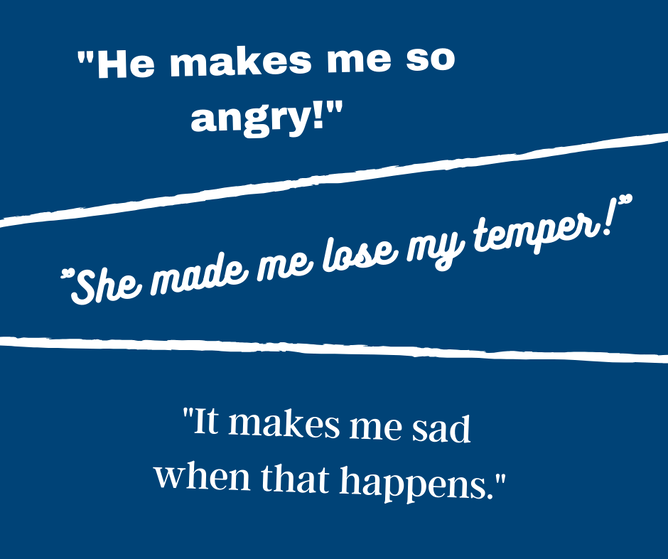Do you ever feel like your moods and emotions are at the mercy of others?
I have some good news...no one can make you feel something! Their words and actions can affect you but they don’t cause your feelings. Your feelings are triggered by the meaning you give to their words or actions - the story you tell yourself about them.
Nonviolent Communication (NVC) is transformative in the way that it encourages us to take responsibility for our feelings rather than blaming others for them.
Responding Instead Of Reacting
We accept responsibility for our feelings when we choose to respond rather than react.
In reality, our feelings are a result of two things:
1. How we choose to interpret what others say or do
2. What our specific needs are in that situation
Here is an example to illustrate these:
“You hurt my feelings when you didn’t answer my text.”
Mary blames her hurt feelings on her friend’s action.
“I was disappointed when you didn’t answer my text because I was excited to meet up with you!”
Mary names her feeling clearly and acknowledges
that it is a result of her unfulfilled need for friendship.
Rather than focusing on what someone else is doing wrong, we can look within to understand that our feelings are connected to our needs in the situation. Learning to take responsibility for our feelings is empowering and can reduce co-dependence and conflict in relationships.
Response + Ability
When someone gives us a negative verbal or non-verbal message, there are 4 ways we usually respond.
1. Blame ourselves - We accept the other person’s judgement as correct and take it personally.
2. Blame others - we find fault with the other person and feel anger towards them.
3. Identify our own feelings and needs - we recognise that our response is connected to our feelings and underlying needs.
4. Explore the feelings and needs of others - we focus on the other person rather than our own reaction and try to understand what might have provoked their message.
Feeling Is Not The Same As Thinking
Feelings are usually experienced in our bodies. When you are worried you may feel a knot in your stomach. When you feel sad, you may notice a tightness in your chest.
On the other hand, thinking is cerebral, it’s all in our head! It requires words and judgement about a situation.
Sometimes we use the word “feel’ without actually describing a feeling! You might say: “I feel that they ignored my opinion” when you actually mean “I think they ignored my opinion”.
Faux Feelings
Here are some clues to help you tell the difference between when you are expressing a thought rather than a feeling.
Usually, feelings are not being expressed when the word “feel” is followed by:
- Words such as “that”, “like” and “as if”, eg: “That bugs me a lot!” or “I feel like a failure”
- Pronouns such as “you”, “he”, “she”, “they” and “it”, eg: “I feel it is impossible”
- Names of other people, eg: “I feel Ann is being irresponsible”
Taking responsibility for your feelings helps you to understand the needs beneath. That’s when deep understanding and growth start to happen in your life!
From Blaming To Owning
There is a difference between describing how we feel and describing how we interpret the way others are behaving towards us.
For example, when Aroha says “I feel unworthy in this group of successful women entrepreneurs” she is assuming that others are judging her and thinking that she doesn’t belong there. Her accurate feelings might be “I feel anxious” or “I feel overwhelmed”.
“I feel like Alex doesn’t care about me” is interpreting a meaning behind Alex’s behaviour rather than realising “I feel disheartened and puzzled because Alex forgot my birthday.
You Can Change Your Mindset
When we begin to understand that our feelings are not at the mercy of others, but are closely connected to our own needs, then we are empowered to step out of a victim mindset and take positive action in our lives.
LEARN HOW TO TAKE RESPONSIBILITY FOR YOUR FEELINGS WITH THE NO-FAULT ZONE® GAME




